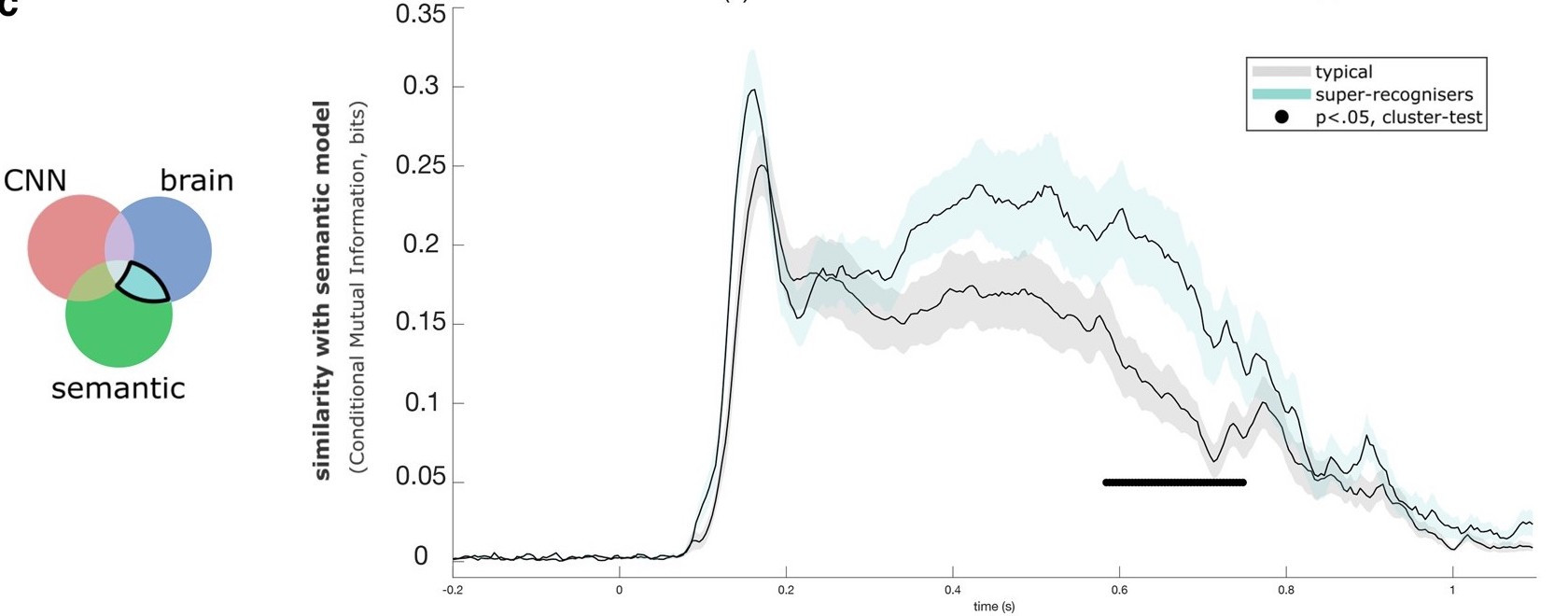
🚨 New paper out in PNASNexus! Using high-density EEG, computational modeling, and behavioral tests, we show that individuals with exceptional face recognition abilities have brain representations more similar to those of artificial neural networks of object vision and semantics

Abstract. Why are some individuals better at recognizing faces? Uncovering the neural mechanisms supporting face recognition ability has proven elusive. To tack
Thanks to all co-authors, reviewers & many more for their amazing help, advice, and support.
Results? We found larger similarity with these semantic computations in the brains of super-recognisers than in those of typical recognisers in a late processing window, between ~600 and 730 ms.

To test this, we asked new participants to write captions describing the EEG stimuli (e.g. “A city seen through a forest”) and used Google Sentence Encoder to transform captions into semantic embeddings. We compared the RDMs of this semantic model to the super/typical brain RDMs
But what about the late decoding evidence? The fact that decoding was significant as late as 1 s after stimulus onset hinted that brain computations beyond what is typically construed as pure visual processing also differed as a function of face recognition ability.
The brain RDMs of super-recognisers showed larger similarity with the RDMs from CNN layers that represent mid-level features (e.g., combinations of edges, contour, shape, texture) between 133 and 165 ms.

To better characterise the visual brain computations covarying with these differences, we compared the brain representations of our participants to those of convolutional neural networks (CNNs) trained to categorise objects using Representational Similarity Analysis (RSA).

The ability decoding was also temporally extended; evidence appeared as early as 65ms to ~1s after onset. This suggested that various levels of brain representations were associated with differences in face recognition ability.
But could we decode *individual* ability scores from brain activity? And does this work on ability scores across typical participants only? Yes, and yes. Using a continuous (ridge-regression) approach, we could also decode individual ability scores across typicals in similar windows.
Using MVPA, we could decode super-recognizers from 1 second of brain activity. This decoding peaked spatially in right-hemisphere electrodes, and peaked temporally around the N170 window.

We started by recording a large, category-rich dataset of high-density electroencephalographic recordings from 16 super-recognisers and 17 typical recognisers (>100,000 trials total, ~120 hours of recordings).
